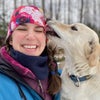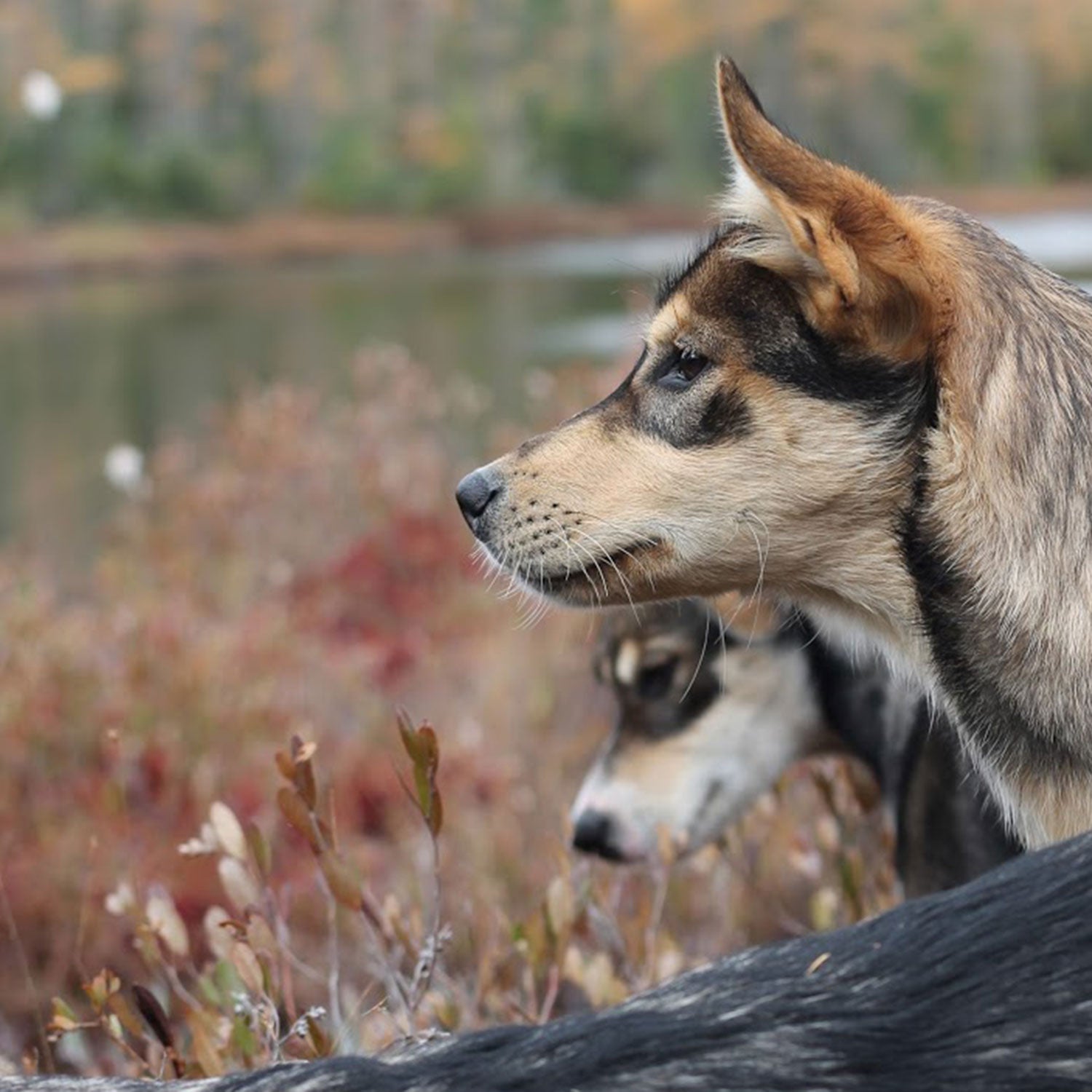Summer has lasted into November in northern Wisconsin, which is lovely, I’m sure, for everyone who doesn’t have sled dogs. But I do—21 of them—and they can’t run unless it’s under 50 degrees, so my fiancé and I have been working some very late nights and early mornings to squeeze in the five-to-ten-mile runs we normally would have completed back in September. Even so, we have to stop every few miles for water breaks to let the dogs cool off. They lap at their water bowls, but within a minute they’re leaping to go again, Popeye trilling his creepy excited wail, Willy striking twisted poses four feet in the air. They’re all chubby, too, built up on fat scrapings from bear hunting season. Normally by now they’d be running far enough—20 miles most days—to balance out the extra calories donated from the taxidermist, but this year they’re developing adorable layers of blubber that will burn off quickly when the nights finally get cold.
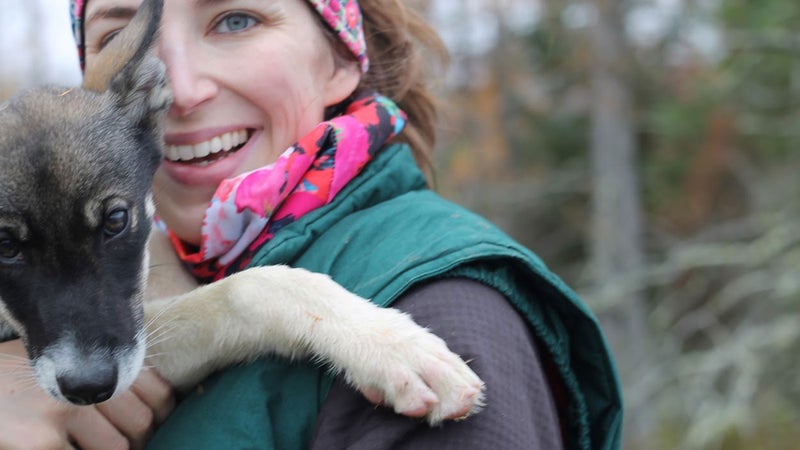
The one upside to this late freeze is that I’ve been able to pour all that extra energy into obsessing over this summer’s puppies—the first ones I’ve raised in my ten years as a musher. Nothing makes me sentimental like these little trouble nuggets. Seriously, I’m brought to embarrassing tears over every milestone: Their first steps! Their first raw meat! Their first howls! God help me when they finally get into a harness, because I’m going to straight-up die. My babies pulling. Or rather, Jenga’s babies, but she’s a sharp-edged drama queen who’s been so over this whole puppies thing since, like, week three, at which point I took over as surrogate husky mama. It’s been an honor to watch the pups grow from blind hamsters into actual tiny dogs, and it’ll be even more of an honor to watch them mature, build their roles within the team, cover mile after mile of trail. I love them now, and I’ll love them even more when they’re going gray, ten or 12 years old, still thrilling to fresh snow or curled up by the fireplace if they prefer. Old dogs are so beautiful! I’m gonna cry again. It’s the hormones.
Anyway, now that they’ve more or less learned to manage their bodily functions, the pups are ready for their next lesson. And this one’s even more important for their careers as sled dogs. I’m teaching them to be brave.
Our classroom is a wild cranberry bog centered around a small lake a few miles from home. The shoreline is made up of free-floating rafts of moss, anywhere from two to six feet across. If you had a paddle, you could row one of the rafts clear to the other side of the lake, although you might be half-sunk by the time you get there. If you don’t sink, you’re sure to find yourself at some point drifting helplessly from shore, gauging a leap over open water that’s getting wider by the moment. Speckled cranberries rest half-hidden between blood-red pitcher plants, and the whole mess is thicketed with logs and branches and incongruous floating evergreens. It’s a perfect place for the pups to learn courage.
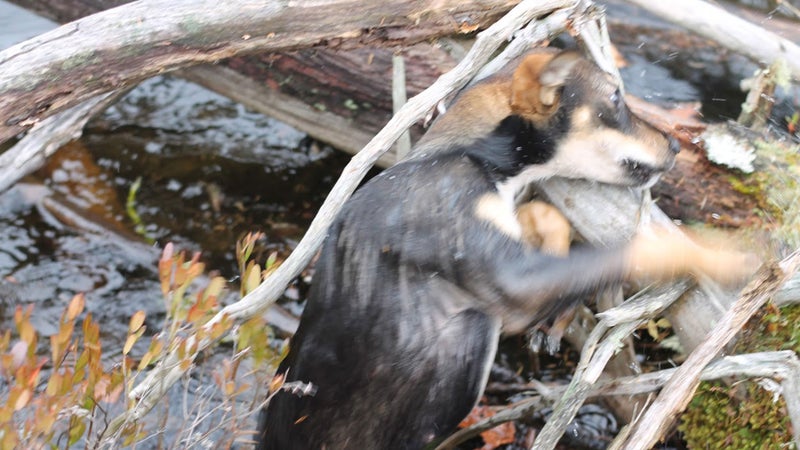
The first time I brought them to the bog, the pups barely ventured onto the floating shore. Their legs stiffened; they clustered together on a half-submerged wooden board; a few toppled into the water. They wailed so much that a pack of coyotes started howling and yipping just beyond the treeline, and I had to sing loudly and rush the pups back to the truck, counting heads the whole way. Later, a friend told me that coyote calls have a setting called “puppy in distress,” but whether the sound attracts coyotes hoping to help their young or to grab an easy meal, I never want to find out.
But by our second day at the bog (midmorning—well before sunset, when the coyotes wake up), the pups were bolder: they started exploring the unstable surfaces, leaping crevasses, traversing the occasional half-rotten two-by-four bridging open water. By the third time, they were exploring beyond where I could follow, balancing on floating logs, testing new challenges as they found them. They were safe, but it was only through play that they could learn the boundaries of that safety, a skill they’d need on the trail: the difference between fording a shallow creek and crossing thin ice, trotting even with a lone wolf or chasing down a mama moose. Each time they try something new, I reward them with cuddles and praise. I need them to know in their bones that if I ask them to do something, it’s because I know they can do it. I want them to develop their instincts, to explore other routes if the trail is impassable, to trust me to keep them safe so I can trust them to do the same for me.
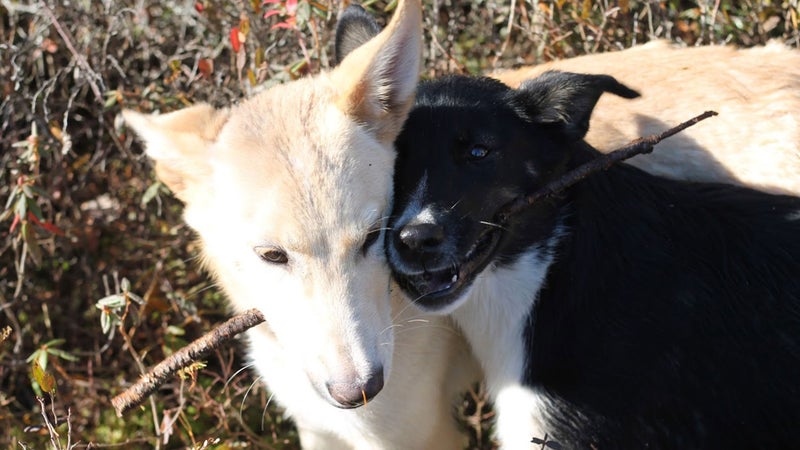
I know I’m projecting. Courage in the outdoors, knowledge of my own limits, is something I’ve been testing and pushing since I was a teenager. It’s something that dogsledding has done for me. For years, I panicked before every run, terrified by the fact that I could not predict, could never predict, what was going to happen that day. I’ve never really gotten over that fear. But what I’ve learned through years of blizzards and frostbite and broken headlamps, tangles and wolves and splintered sleds, is that whatever happens, I’ll find a way to handle it. I can’t predict or control problems, but I have a darn good track record for protecting my team and coming out the other end. Sometimes I think that’s as close to real courage as I’m going to get.
The last time we went to the bog, I was the one who got stuck. It was a warm day, 70 degrees, and the pups were leaping back and forth across the water, but I felt that familiar panic as the surface beneath me started drifting from the shore. I had my phone in my pocket (ugh). I tossed it as far as I could onto dry land, then closed my eyes, took a giant step, and sank to my chest in the cold water. Within a moment, something heavy landed on my shoulders: two of the puppies had jumped onto me, my torso just another island, just another challenge, just another game. I laughed so hard I could barely climb out of the water.
Blair Braverman () is the author of . This is her first of four columns about raising a sled dog team.

